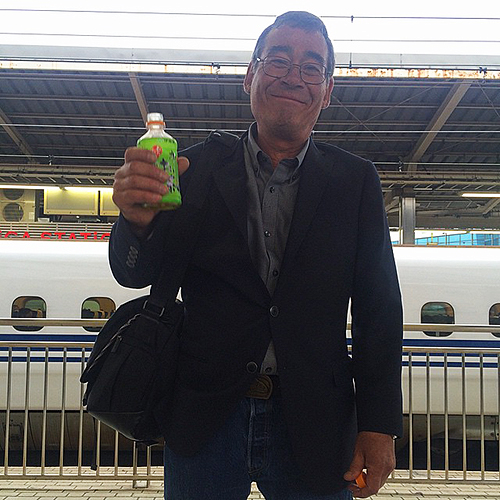What makes Japan so cool? Is it the famed disciplinary figure, the samurai whose code permeates through Japanese society? Or is it the incredibly complex linguistic system of Japan, which is comprised of four different original systems? Or possibly it is the food and aesthetics: the sushi, seafood, cherry-blossoms, and bonsai trees. These are some of the things that the Japanese Connections group of 2016 are curious about and, to their fortune, the answer lies right ahead of them.
At the beginning of April, five students from Orcas High School: Devon Mann, Emma Heikkinen, Simone Hansen, Jo Gudgell, Pasha Bullock, and Enzo Thixton and three from Lopez High School: Sophie Louise Burton, Uhane Johnson, and Vinny Kramer will be taking a flight to the archipelago where they will enjoy a two week stay.
“I can’t wait! I am so excited to eat different foods, participate in tea ceremonies, meet new people, and even learn to speak the language better!” says one of the Orcas members while practically bouncing off of the sides of the walls. The difference between American and Japanese cultures is what drives this excitement. In America, eating eel is not an everyday practice, yet in Japan it is an entree served at most restaurants. Likewise, although manga and anime are semi-popular in the States, they are practically worshipped in Japan. This trip is giving these students a chance to become accustomed to different things, like wearing a kimono or becoming obsessed with sumo-wrestling.
However, this amazing “vacation” opportunity is not just a visit to Disneyland. In actuality, the Japanese Connections Program is a course worth a full half credit and just like all courses it is full of assignments and projects. As a member points out, “We are given multiple books to read as well as a list of phrases expected to be memorized by the beginning of the trip. There really is a lot of homework.”
The course is completed when students complete their individual capstone projects relating to a prominent person who lived during the Tokugawa era of Japanese history. These projects will be shared with the school at the end of the year in an attempt to inform others about Japanese history and hopefully inspire students to become involved in the program in following years. Maybe next year it will be you eating eel or using high-tech talking toilets…
The program is organized and run by Hugh and Patricia Burleson, two Japan-loving people who feel the need to share the amazing and rich Japanese culture with high school students. Supervising, and to some degree conducting this group, are Val Hellar, an Orcas High School history teacher, and Joe Behnke, Lopez High School art teacher. This will be the fifth trip for each of them, and they have much advice to give, especially about proper Japanese etiquette. Some of the important etiquette includes always taking off your shoes when going inside, not sticking your chopsticks into your rice vertically while attending a meal, and being very careful when giving gifts to not give anything containing four items.
These are only a few of an endless list of the customs unique to Japan. In the United States, wearing your shoes in the house, in many cases on a bed or couch too, is commonplace, as is giving gifts containing four items. Our culture is almost a polar opposite of Japan’s and this is the precise reason why a two week study tour is such a thrilling event to Orcas and Lopez Island students.
The biggest, most beneficial element to the trip is the open-mindedness that it instills in each student. By seeing the world from a completely different angle, like that of a culture or society that is so different from one’s own, one becomes more aware of one’s self and one’s ideals. One of last year’s participants states that the Japanese Connections Program, “was seriously one of the best experiences of my life.”



